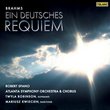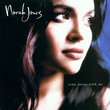| All Artists: Dmitry Shostakovich, Eugene Ormandy, Philadelphia Orchestra, Emil Gilels Title: Shostakovich: Symphony No.15 & Sonata No.2 Members Wishing: 0 Total Copies: 0 Label: RCA Release Date: 1/11/2000 Album Type: Original recording remastered Genre: Classical Styles: Forms & Genres, Sonatas, Historical Periods, Modern, 20th, & 21st Century, Symphonies Number of Discs: 1 SwapaCD Credits: 1 UPC: 090266358724 |
Search - Dmitry Shostakovich, Eugene Ormandy, Philadelphia Orchestra :: Shostakovich: Symphony No.15 & Sonata No.2
 | Dmitry Shostakovich, Eugene Ormandy, Philadelphia Orchestra Shostakovich: Symphony No.15 & Sonata No.2 Genre: Classical
On the surface, Shostakovich's last symphony is a strange bird. One wonders why the first movement keeps quoting the William Tell overture. Why does the fourth movement incorporate Wagner's fate theme from the Ring? And wh... more » |
CD DetailsSynopsis
Amazon.com On the surface, Shostakovich's last symphony is a strange bird. One wonders why the first movement keeps quoting the William Tell overture. Why does the fourth movement incorporate Wagner's fate theme from the Ring? And why the cello and violin solos? The answers, frankly, don't matter. Amidst all these oddities, there is great music to be heard here. This reissue features the American premiere of Shostakovich's Symphony No. 15, from 1972--with Eugene Ormandy leading the Philadelphia Orchestra--paired with the composer's second piano sonata performed by Emil Gilels. Typically for Ormandy's Shostakovich, these are dramatic hallmark performances and the sonics--thanks to RCA's 24/96 remastering technology--are gorgeous. Notes from Ormandy explain part of this symphony's charm--Shostakovich imagined the first movement as a toy shop at night where the toys came to life (hence William Tell)--but it really must be heard to be appreciated. Gilels's performance on the sonata, dating from 1965, is lean and contemplative, but the symphony steals the show. With its great sound, and at midprice, this disc is steal. --Jason Verlinde Similarly Requested CDs
|
CD ReviewsGood symphony, Great sonata Deborah M. Lisle | Salem, OR United States | 11/06/2001 (5 out of 5 stars) "This symphony, when I first heard it, perplexed me, to say the least. I am a big fan of Shostakovich, especially the piano works (24 preludes and fugues, piano concertos and piano quintet are all incredible), but this was the latest work of his I had ever heard. As I listened more and more, however, I became increasingly impressed with it. Despite the sparseness of the first movement it stills carries the power of Shostakovich. There are some very musically profound moments all throughout the symphony. The sonata is amazing. Emil Gilels interpretation is easily the best one I have ever heard. He takes it from a very cool, almost stoic perspective. It fits the music perfectly. The mechanical precision brings out the genius and power of this great work. I highly recommend this CD." First Recording still the best philvscott | Marrickville, New South Wales Australia | 02/26/2004 (5 out of 5 stars) "I got to know Shostakovich's 15th from the LP of this performance, the work's first recording (in the West, anyhow). It has come up well in RCA's stunning remastering, and is still the best performance overall that I know. Ormandy paces the enigmatic piece moderately, never over-emphasizing any of the contrasting moods (as Jansons does in his more- too?- full-blooded approach, with the LPO on EMI), or rushing it to try and whip up excitement (as Neeme Jarvi does on DG with the Gothenberg Orchestra). Haitink's old Decca version is very good (as are all his Shotakovich symphonies- you could do worse than buy the box set), but Ormandy had the better band, and the added focus born of premiering the work. Couplings help decide the issue: Jarvi has been reissued in a 2-cd set with his Shostakovich 13th & 14th Symphonies: good value if you don't have any of them, and fine singing from Sergei Leiferkus in 14, but still a rush in 15. Jansons is coupled with the Second Piano Concerto, beautifully played by Mikhail Rudy, but it's a better idea to get both concertos on one disc: I'd recommend Bronfman or Hamelin. The RCA disc couples Ormandy's reading with a justly famous, magisterial performance of the Second Piano Sonata by Emil Gilels: game and match. I heartily agree with the reviewer ryzzard that Ormandy's 14th should be reissued: another first recording, featuring the great Phyllis Curtin. The way things are going with BMG, though, I'd say don't hold your breath. In '97 DG released a recording of a transcription of the 15th Symphony for violin, cello, piano, celeste and percussion, played by Gidon Kremer's group Kremerata Musica. It doesn't quite work as a cogent piece of music, since Shostakovich always thought orchestrally, but it's very interesting to hear the bones of the piece's structure laid bare. I don't know if this CD is still available. Meanwhile, 5 stars for Ormandy, and for Gilels. The symphony is a haunting masterpiece." Shostakovich By One Of The Composers Favorite Interpreters orlac | Boston | 08/22/2001 (5 out of 5 stars) "In his late life Dmitri Shostakovich so admired Eugene Ormandy's conducting of his works that he gave him the right to the first American performances of the last 3 symphonies. How much admired? Shostakovich took the risk of getting a smuggled copy of the semi -banned 13th Symphony to him for performance. Till his death Ormandy never revealed how it had been smuggled. This perceptive performance of the 15th shows Shostakovich's faith was well placed. Aided by a score notated by the composer Ormandy brings clarity and a sense of purpose to a score that has baffled many. I would hope as another reviewer has that RCA will finally release the performances of the 13th and 14th under Ormandy. Like the 15th they are admired not just by critics and listeners but by the composer himself."
|

 Track Listings (7) - Disc #1
Track Listings (7) - Disc #1





